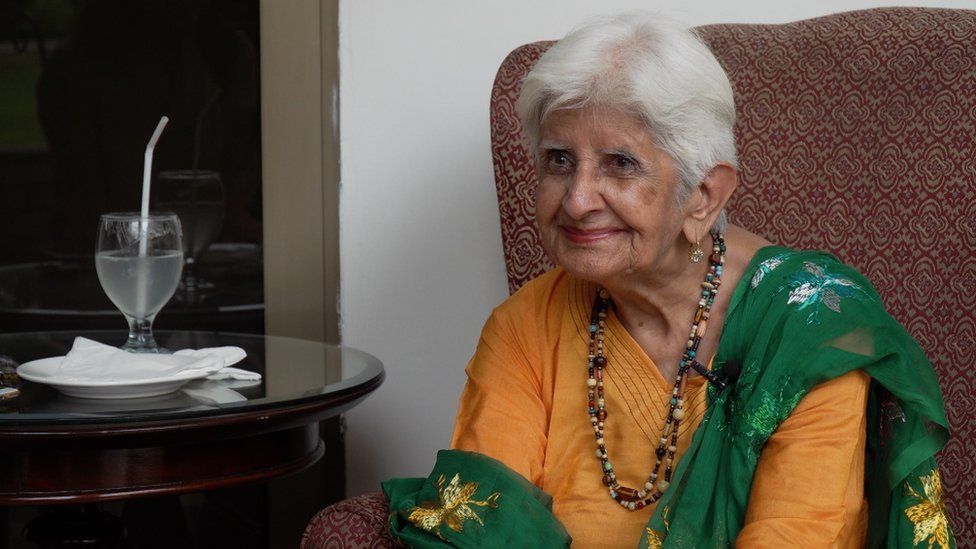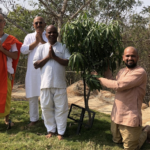
Singh Maini
Several recent incidents highlight the strong yearning of ordinary Indians and Pakistanis to interact more frequently. For one, several members of separated families have been reuniting after decades at Gurdwara Darbar Sahib in Pakistan via the Kartarpur Corridor. We have also seen the rousing welcome given to 90-year-old Reena Chibber Varma from Pune in Pakistan recently. And three pad yatrees (foot pilgrims) also from Pune, currently walking for peace in cities around Pakistan, have had similar experiences in public places.
These developments again bring to the fore the need to ease visa regulations, especially for individuals over the age of 65 as stipulated by the visa agreement 2012 that is yet to be implemented. Many senior citizens want to visit their ancestral homes. Those from divided families want to meet their relatives. And ordinary citizens want to travel and meet each other.
As Pakistan and India commemorate 75 years of Independence and Partition, it is essential to examine the trajectory of the bilateral relationship. Particularly instructive are the years 1947-1965, an interesting phase in people-to-people contact as well as economic linkages. Several commentators have flagged this point. This is underscored by Pallavi Raghavan’s Animosity at Bay: An alternative history of the India-Pakistan relationship, 1947-1952 (Oxford University Press, 2020), which highlights the agreements between both governments during this period over important issues
First, it is important to note that despite the acrimony arising from the violence, migration and suffering of Partition, individuals during those initial years were able to meet far more freely than we can imagine today. Sporting events, such as a cricket test series in Pakistan in 1955, and hockey matches, provided an opportunity for citizens from both sides of the divide to re-unite with friends. These reunions of individuals who had witnessed Partition were characterized by emotional outbursts and warmth. The sporting events themselves were not characterized by hostility as seen in later years.
Second, one of the reasons for the easy people-to-people contact was that till 1952 neither country required a visa for each other’s citizens. Even post-1952, it was easy to cross the border. The real dip in such linkages and economic ties came after the 1965 war.
In terms of economic linkages, while economic linkages began to go down after the early 1950’s, trade continued to be carried out not just via Wagah-Attari, but also Hussainiwala-Kasur/Gandasinghwala and Munabao-Khokhrapar where a rail route connecting the two communities existed until 1965. Significantly, until 1965 Indian banks had 17 offices in Pakistan.
We have over the years looked to other regions for a template citing the example of the European Union model of integration, which clearly faces challenges, as well as other blocks like ASEAN. However, if we just look back and study the 1947-1965 phase in our own region in terms of people-to-people exchanges as well as economic linkages, there is a lot to learn. This can be helpful not just for policy makers, but scholars on both sides, as well as ordinary people.
It is important to not just document the important events of that period but also the experiences of those who have witnessed it, to draw lessons. Oral history is a particularly important tool for research in these areas.
Even after 1965, India and Pakistan made some important agreements and took steps to strengthen people-to-people contacts as well as trade linkages. Meanwhile, various civil society initiatives have continued to work tirelessly to promote people-to-people contact.
While it is easy to be pessimistic and or dismiss such efforts, it is important to take note of the positives. The reunion of separated families via the Kartarpur corridor have not just attracted media coverage but also helped contribute to the narrative in favour of greater people-to-people links.
To conclude, while the phase between 1947-1965 cannot be replicated in a changed geopolitical and economic architecture, policy makers, scholars, and activists need to examine it carefully and build on it.
The level of connectivity we have seen, on land and by rail as well the old trade routes and people-to-people contact, even before the concept of ‘globalization’ gained momentum in other parts of the world, provides an important lesson not just for Southasia, but other regions as well.
Tridivesh Singh Maini is a policy professional and Visiting Faculty at the OP Jindal Global University, Sonipat (India). He is the author of South Asian Cooperation and the Role of the Punjabs (Siddharth Publications, 2007). Twitter @tridiveshsingh. This is a Sapan News syndicated feature www.southasiapeace.com








